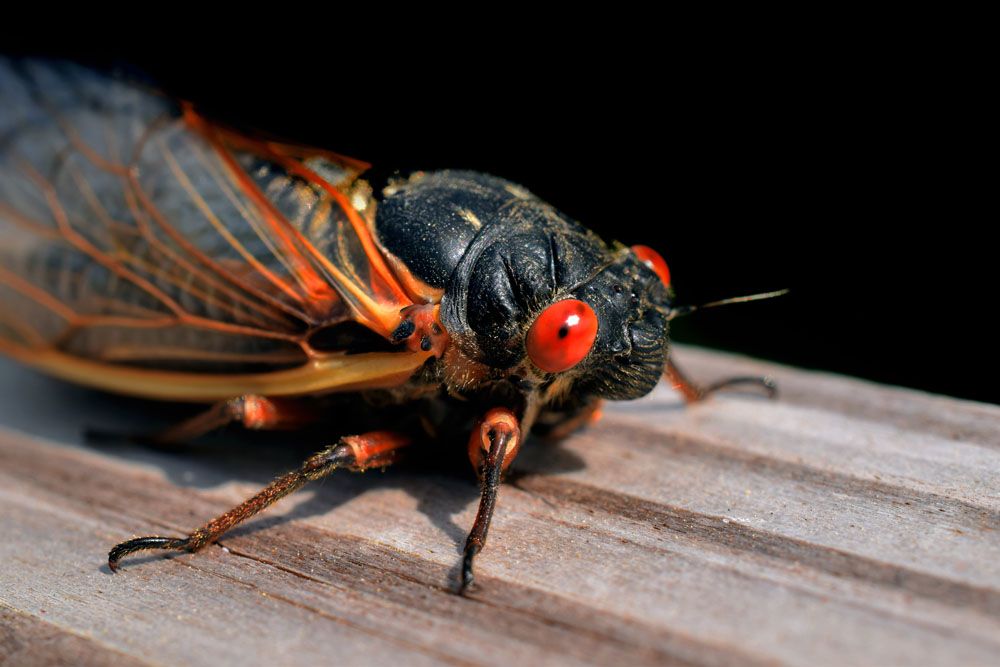
13-year Cicada – Magicicada tredecim
13-year Cicada (Magicicada Tredecim)
Latin Name: Magicicada tredecim
Common Name: 13-Year Cicada or 13-Year Decim
Appearance:
Magicicada tredecim is a 13-year periodical cicada closely related to the newly discovered 13-year species Magicicada neotredecim. It differs in male song pitch, female song pitch preferences, abdomen color, and mitochondrial DNA from the newly discovered 13-year species Magicicada neotredecim. Cicadas with a 13-year lifespan emerge in the south.
- 13-Year Cicada has a striking black body with red eyes and orange wing veins.
- Body length (from the front of the head to the tip of the subgenital plate) is 28-33 mm.
- The body is black with orange wings and legs. The abdomen has orange stripes. Between the eye and the wing is bright orange.
